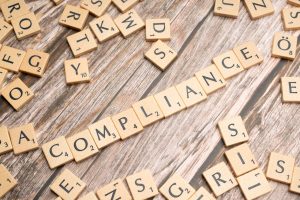The cryptocurrency ecosystem is continuously evolving, and various ways to earn passive income from crypto holdings have emerged. One such method is staking, which allows users to earn rewards by participating in the maintenance of a blockchain network. While staking offers promising returns, it’s essential to understand the differences between custodial and non-custodial staking. In this blog, we will explore custodial staking – what it is, how it works, its benefits and risks, and why it may be the right option for certain crypto users in 2025.
What is Staking?
Before diving into custodial staking, it’s important to understand what staking is in the context of cryptocurrency. Staking is the process of locking up your cryptocurrency to participate in the operations of a blockchain network, such as validating transactions and securing the network. In return for staking their tokens, users are rewarded with additional tokens, typically based on the amount they stake and the duration of the staking period.
Staking is primarily linked to Proof of Stake (PoS) blockchains, where network validators are selected according to the amount of cryptocurrency they hold and are willing to “stake” or lock into the network. Staking allows token holders to earn passive income without selling their assets. It also plays a critical role in securing the blockchain and ensuring its decentralization.
What is Custodial Staking?
Custodial staking is a type of staking service where a third party, usually a cryptocurrency exchange or a financial service provider, holds your crypto on your behalf and manages the staking process. This is different from non-custodial staking, where you retain full control over your private keys and tokens, and the staking provider takes care of the technical aspects of staking while the user receives staking rewards.
Custodial service providers often build a user-friendly interface, making it easier for users, especially beginners, to participate in staking without needing technical expertise. This convenience comes with certain trade-offs, especially regarding control and trust.
How Does Custodial Staking Work?
When you participate in custodial staking, the process usually works this way:
- Deposit Crypto: You deposit your crypto assets in the wallet on the platform, and those assets are held in the custodial service of the platform.
- Staking Pool Participation: The provider pools your staked assets with other users’ assets. They might also stake those assets on several blockchain networks to spread the staking process.
- Rewards Distribution: The staking provider rewards you with a share of the staking rewards based on the amount you staked and the duration of your participation. Usually, the rewards are distributed periodically, for example, daily, weekly, or monthly.
- Withdrawal Options: Staked assets can typically be withdrawn at any time, though some platforms may impose specific withdrawal restrictions. In certain cases, platforms may enforce lock-up periods for staking, particularly if the network or platform has specific requirements related to staking duration or conditions.
Benefits of Custodial Staking
- User Convenience
One of the major benefits of custodial staking is that it is simple. Setting up and managing staking on your own can be quite technically challenging. With custodial staking, you can participate in staking with minimal effort. The service provider takes care of all the complexities involved, like managing the staking rewards, and making sure everything runs smoothly.
- No Need for Technical Knowledge
Non-custodial staking usually requires running one’s own validator node or working directly with staking protocols. Custodial staking is more accessible for those who don’t wish to go that deep into blockchain technology. Here, the custodial provider takes care of all the technicalities, and users can start earning rewards immediately without technical expertise.
- Automatic Reward Distribution
Another key advantage of custodial staking is that it eliminates the need to track rewards or manually claim them. With this service, rewards are automatically credited to your account, reducing the risk of missing out on earnings.
- Security and Support
Reputable custodial platforms offer enterprise-grade security, such as cold storage wallets, multi-signature protocols, and insurance coverage. In addition, custodial services often provide customer support, meaning you have access to help if anything goes wrong, such as difficulties with staking rewards or withdrawals.
- Access to Multiple Staking Networks
A major advantage of using custodial staking is that it allows users to stake across different blockchains, thereby diversifying their staking rewards. The diversification benefits in reducing the risks, particularly when there are fluctuations in the volatility of a given blockchain network.
Risks and Considerations of Custodial Staking
- Loss of Control
One of the drawbacks of custodial staking is the loss of control over your private keys. When you deposit your cryptocurrency with a custodial service, you entrust the provider with the responsibility of safeguarding your assets. As a result, if the service provider experiences a hack or insider fraud, your funds could be at risk.
- Platform Dependency
Since the platform controls your assets, you’re relying on the provider’s infrastructure, security practices, and policies. If the platform experiences downtime or faces legal issues, it could delay your ability to access your funds or receive rewards. Additionally, some platforms may charge fees for their services, which could be deducted from your staking profits.
- Withdrawal Restrictions and Lock-Up Periods
Some custodial staking services impose withdrawal restrictions or lock-up periods, meaning your funds may not be immediately accessible if you need them. It’s essential to review the terms and conditions of any platform before investing, as they will outline any limits that could affect your access to your funds.
- Regulatory Risk
As the cryptocurrency industry becomes increasingly regulated, custodial staking platforms may be subject to local laws and regulations that could impact their operations. Depending on the jurisdiction, certain platforms may face restrictions that could influence your staking rewards or access to funds. It’s crucial to choose a platform that complies with local regulations to ensure the safety and stability of your investments.
- Platform Fees
Many custodial staking services charge fees for staking management. Although these fees are typically lower than the costs associated with setting up and maintaining independent staking procedures, they still add an expense to what is otherwise a free source of staking rewards. It’s important to compare the fees across different platforms before making your decision.
How to Make a Choice among Custodial Providers
To evaluate a custodial staking service, consider the following key factors:
- Reputation and Security: Ensure that the staking platform has a good reputation and uses industry-standard security measures, such as cold storage and insurance.
- Supported Assets: Ensure that the platform supports the cryptocurrencies you want to stake; not all platforms offer the same selection of digital assets.
- Fees: Review the platform’s fee structure to understand how much you’ll be charged for staking services. Some platforms charge a flat fee, while others may cut a percentage of your staking rewards.
- Rewards Distribution: Look for platforms that offer transparent and consistent reward distribution. Some platforms may pay out daily, while others may only distribute rewards monthly.
- Customer Support: Choose a staking platform that provides reliable customer support to address any questions or issues related to your rewards, deposits, or withdrawals.
- Compliance with Laws: Ensure that the staking platform complies with the legal requirements of the jurisdiction you live in to avoid legal issues.
Conclusion
Custodial staking offers simplicity and convenience, allowing users to earn passive rewards through the staking system. By relying on a third-party provider to manage the technical aspects of staking, users are freed from the complexities of running their own validator nodes. This makes it an excellent option for beginners, busy investors, or anyone who prefers a hands-off approach. However, custodial staking comes with its trade-offs: namely, the loss of control over private keys and the need to trust a third party with your assets.
As the cryptocurrency landscape continues to evolve in 2025, custodial staking is likely to remain a popular choice for those seeking to earn staking rewards while benefiting from the expertise and security of professional platforms. By carefully selecting a reputable provider and understanding the associated risks, custodial staking can be a secure and efficient way to generate rewards in the crypto space.
Disclaimer: Virtual assets carry significant risks, including high volatility and potential loss of your entire investment. They are not backed by governmental protections, and recourse may be limited in case of loss. Always assess your risk tolerance, fully understand the risks, and seek independent financial advice if needed before investing.
Frequently Asked Questions
1. Are custodial staking platforms regulated?
Custodial staking platforms may be subject to local laws and regulations, but the level of regulation can vary by region. It’s important to choose a platform that complies with applicable legal frameworks to ensure security and transparency.
2. How do I choose a reputable custodial staking platform?
When selecting a custodial staking platform, consider factors like security measures, customer support, platform reputation, fees, and regulatory compliance. Research the platform’s track record and reviews to ensure it is trustworthy.
3. What fees are typically associated with custodial staking?
Custodial staking platforms often charge a management fee, which is a percentage of the staking rewards. Fees can vary depending on the platform and the type of assets being staked. Always check the fee structure before committing.
4. Can I withdraw my staked assets at any time?
Withdrawal terms depend on the platform and the specific cryptocurrency being staked. Some platforms impose lock-up periods or withdrawal restrictions, while others offer more flexible withdrawal options. Always review the platform’s terms and conditions before staking.
5. How are rewards distributed in custodial staking?
Staking rewards are typically distributed periodically, such as daily, weekly, or monthly, depending on the platform. These rewards are usually credited to your account automatically, so you don’t need to manually claim them.







